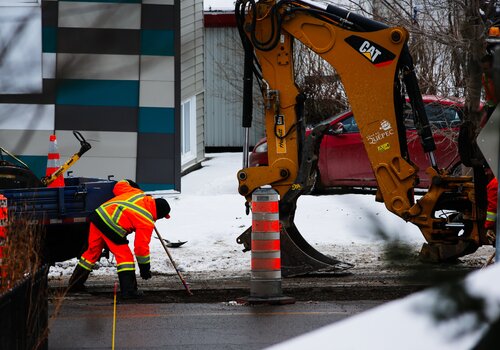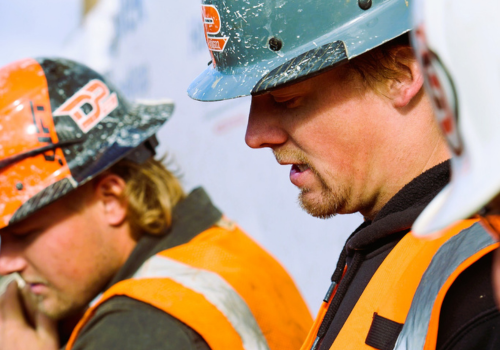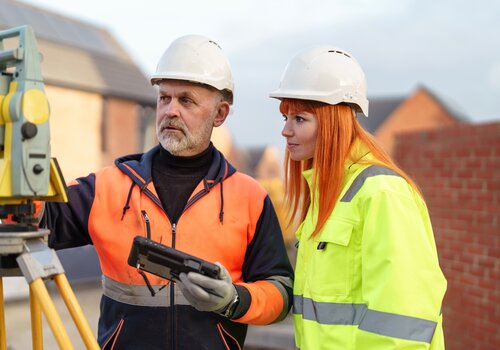If you are in a mental health crisis, call or text 988 to speak to a crisis counselor now. You can also text HOME to 741741 to reach the Crisis Text Line and speak to a live, trained crisis counselor. Learn more about the Suicide & Crisis Lifeline 988.
In the construction industry, suicide and depression are important topics to understand because construction workers are at a high risk for these mental health conditions. Sometimes there are signs that indicate a person may have depression or suicidal thoughts. However, every person’s risk is different and there are also other mental health concerns that are prevalent in construction: substance use disorder, anxiety and posttraumatic stress disorder (PTSD).
SUBSTANCE USE DISORDER
“We've always had the substance use disorder in the industry,” says Ann Marie Dale, PhD. “Now, we do have more addictive drugs out there. We do have the need for more ways to cope with life.”
Dr. Dale is a professor of medicine and occupational therapy at Washington University. She began her career training as an occupational therapist treating injured workers. She began researching ways to prevent injuries and this led to studying chronic injuries in the construction industry. Now, her focus has shifted to mental health conditions and substance use disorder because the industry needs a lot more help addressing these issues.
In 2015 a construction workers’ union contacted Dr. Dale because they found a lot of workers were receiving opioid prescriptions. Young workers were going to the doctor more than the older workers and this information concerned the union. Dr. Dale traced their appointments and found a lot of workers got opioids as the first form of treatment – a treatment that should be reserved as a last effort for severe cases.
“Some of these people weren't that severe, but they were getting opioids,” Dr. Dale says. “Then, I traced their history, and we found that people who received opioids more often ended up being treated for addiction within one year of their first prescription.”
We’ve learned that people can be genetically predisposed to addictive tendencies – but not everyone is. This can lead to a lot of misunderstanding, reinforcing the mental health stigma and could lead people to not seek the help they need or even talk about it.
Workplaces can eliminate stigma. We can definitely improve it dramatically, but it takes a whole lot of conscious effort and action in order to make it happen.
Ann Marie Dale, PhD
Professor of Medicine and Occupational Therapy, Washington University
ANXIETY
Anxiety isn’t “just” anxiety. There are distinct types of anxiety – generalized anxiety, social anxiety and more – and people experience these at various levels of severity. The level of severity ebbs and flows.
“Does a person with anxiety always have severe anxiety? No, it’s on a continuum,” says Dr. Dale. It’s time to get help “when those conditions or symptoms of those conditions start to take over the person's life and control them.”
Recognizing that anxiety looks different for each person, Dr. Dale says it can look like struggling to accomplish daily activities or handling responsibilities and managing healthy relationships. It’s hard to notice in others because we don’t always see these parts of people’s lives, making self-reflection a crucial skill.
And that isn’t just specific to construction. The COVID-19 pandemic added strain to many people, regardless of trade.
“Take the job out of it. The world as a whole – people have been impacted,” says Jessica Bunting, MPH, director, research to practice (r2p) at CPWR – The Center for Construction Research and Training. “The numbers of suicide rates, opioid addiction, anxiety and depression are being reported at much higher rates since the pandemic. It's just more prevalent in the construction industry.”
PTSD
There are two major contributing factors to posttraumatic stress disorder (PTSD) in construction: witnessing fatal injuries on the jobsite and the number of veterans in the industry. These aren’t the only situations that contribute to PTSD, nor do they occur in every person. However, the prevalence of PTSD because of these factors is worth talking about as we aim to eliminate the stigma of mental health in construction.
When discussing mental health, the word “comorbidity” comes up a lot. This refers to having multiple mental illnesses and high comorbidity is common with all of these conditions, but especially in PTSD. The most prevalent conditions that occur with PTSD are depression, anxiety and substance use disorder – everything discussed in this article.
“If you have a physical injury of any kind and you take care of it, that's okay. People don't really stigmatize that,” says Max Margolis, program director of Construction Suicide Prevention Partnership. “But the thing with mental health is there is this idea that there's a weakness. That there's something fundamentally wrong with you. It matters a lot that people are aware that there are resources out there to help.”
WHERE DO WE GO FROM HERE?
The good news is there is help. There are steps we can take to make sure people get the access to resources they need – and keep our own notions of mental health concerns in check.
“If I'm dealing with a person who has these problems, I can take it upon myself to recognize my own stigma and to do something about it,” says Dr. Dale. “It means I need to become educated. I need to understand what caused that illness.”
From an occupational standpoint, leadership can intentionally implement mental health education and provide resources, like employee assistance programs with behavioral health benefits.
“Workplaces can eliminate stigma,” Dr. Dale says. “We can definitely improve it dramatically, but it takes a whole lot of conscious effort and action in order to make it happen.”
Content Note: The CONEXPO-CON/AGG 365 newsletter will feature content about mental health over the course of the next few months. While these topics can be challenging, we want to remind you about one underlying feature: hope.
We will tackle topics related to suicide, PTSD and other mental health conditions that are prevalent in the construction industry. There are resources to help – whether you need help yourself or want to help a friend. Where there is help, there is hope.
One way to attack the mental health stigma is by telling your story. Please contact us if you would like to share your journey with fellow CONEXPO-CON/AGG 365 readers.
Photo credit: KASIA BIALASIEWICZ/BIGSTOCKPHOTO.COM












